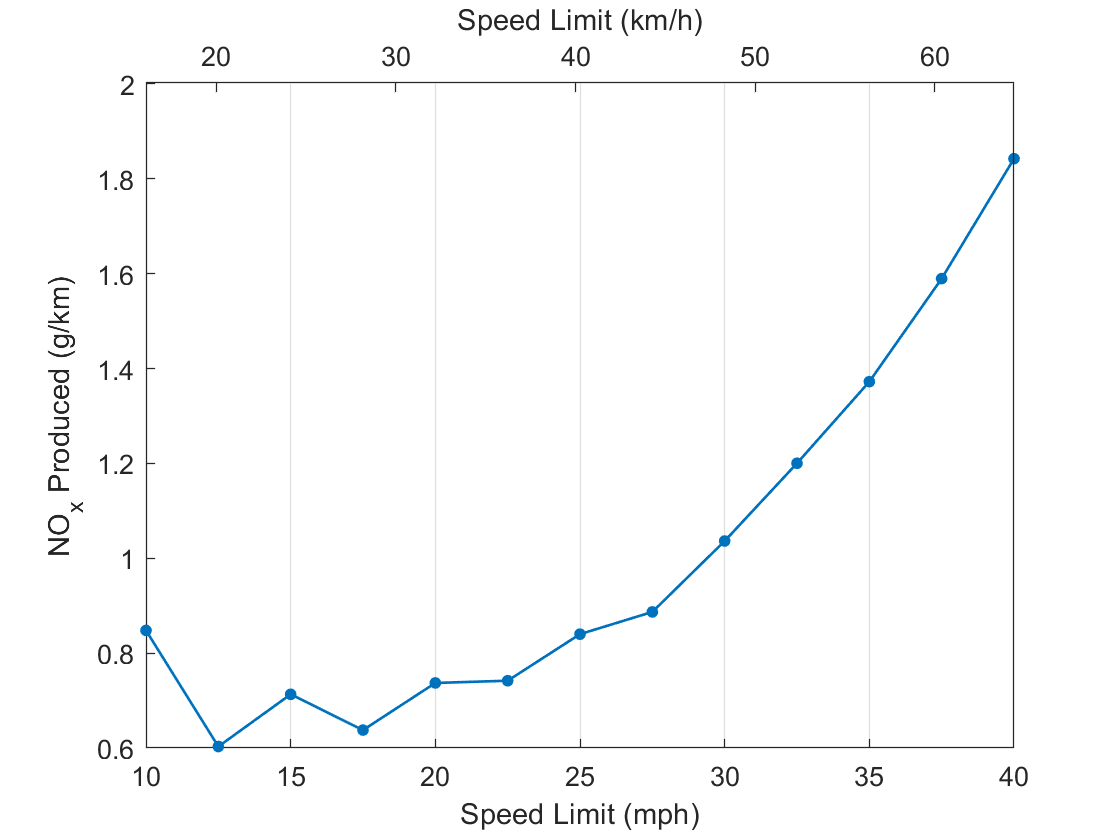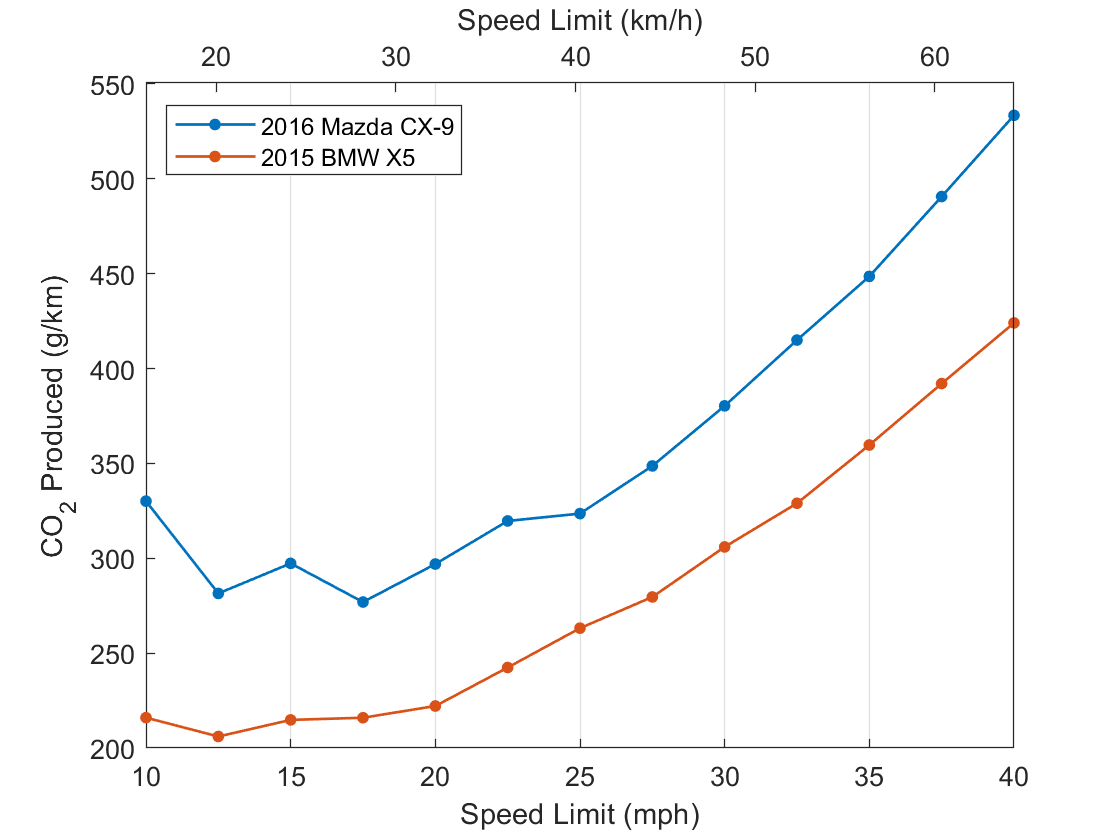Vehicle exhaust emissions - CO2, PM2.5 and NOx - are highest during acceleration. Microplastic particulates from tire emissions are highest during braking, accelerating and cornering quickly. In urban areas, vehicles accelerate and decelerate repeatedly due to junctions and traffic. Allowing for the emissions when vehicles are accelerating and they typically have the lowest NOx and CO2 emissions, and the best mpg, when driven at maximum speeds of 15-20mph. Particulate Matter (PM2.5) from tyre wear and brake pad wear is a lot higher when decelerating from higher speeds, and also from cornering at higher speeds. Because of the extra emissions during acceleration, NOx and CO2 go up rapidly when driving at higher speeds in urban areas.
For details see here.
Electric cars are always more efficient and always have lower PM emissions at lower speeds.
Speedcam Anywhere does not issue speeding tickets or fines like a conventional speed camera and has not been approved in the UK to be used as one. Speedcam Anywhere is the same as a dashcam, that can be used to gather evidence of motoring offences. As with a dashcam, any prosecution would always have to be done by the Police, and at the discretion of the local Police force.
Speedcam Anywhere do not ourselves pass on any information to the Police. We may be requested to do so at some future date.
In Pro Mode, Speedcam Anywhere is substantially more accurate than +/-2mph. You should check in the report that the vehicle details are correct and the wheel locations are accurately identified before using the speed measurement. If any of those are wrong, the speed will not be correct.
Speedcam Anywhere does not rely on any sensors that require calibration. The only two measurements it uses are the length of the vehicle wheelbase, and the video timestamps taken from the internal clock in the phone. Your phone's clock is substantially more accurate than is required to measure a vehicle speed from a video. To get an error of 0.1mph in a 30mph measurement would require an error of 1 part in 300 in the phone clock. This would mean your phone clock losing 5 minutes a day. If the internal clock was that inaccurate, it would be unable to stay synchronised with the mobile phone network.
In Basic Mode, accuracy is around +/- 10% of the vehicle speed. Errors will be higher for non-standard sized vehicles.
Vehicle exhaust emissions - CO2, PM2.5 and NOx - are highest during acceleration. Microplastic particulates from tire emissions are highest during braking, accelerating and cornering quickly. In urban areas, vehicles accelerate and decelerate repeatedly due to junctions and traffic. Allowing for the emissions when vehicles are accelerating and they typically have the lowest NOx and CO2 emissions, and the best mpg, when driven at maximum speeds of 15-20mph. Particulate Matter (PM2.5) from tyre wear and brake pad wear is a lot higher when decelerating from higher speeds, and also from cornering at higher speeds. Because of the extra emissions during acceleration, NOx and CO2 go up rapidly when driving at higher speeds in urban areas.


For details see here.
Electric cars are always more efficient and always have lower PM emissions at lower speeds.
Speedcam Anywhere needs to be able to get a clear view of the whole vehicle passing across the screen. It needs to have a clear view of the wheels, and to get an accurate measurement, a clear view of the numberplate as the vehicle passes. Aim the camera at about 45 degrees across the road for best results. The phone must be held still for 2 seconds whilst the capture takes place. Do not pan the camera to follow the vehicle. Practice in Basic Mode before using more credits in Pro Mode.
Lower spec phone cameras, rain, bad light and being further away from the vehicle will reduce the likelihood of the capture succeeding.